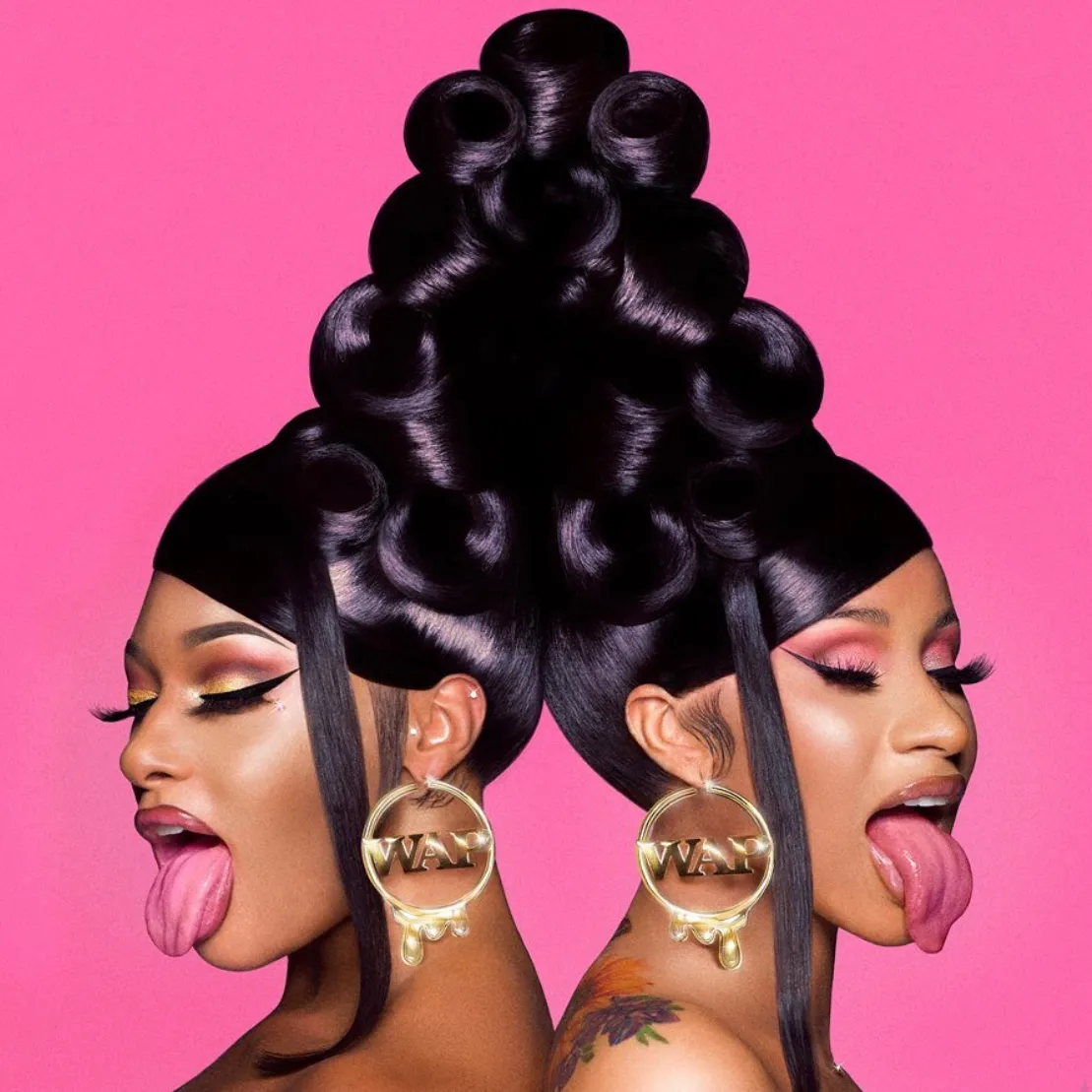by Brooklyn R. White
Picture this. The City Girls, heirs apparent to Salt-N-Pepa (though more lyrically aligned with Lil’ Kim and Foxy Brown’s would-be duo), bent at the waist, peering back through gapped legs, ready to twerkulate. Their bodies draped in a form fitting, black leather and sheer combo, feet elevated by glass heels. The ladies’ hands are accented by multi-inch, hot pink acrylics and are gripping their butts, thighs, the back of their knees and their ankles (thanks to Photoshop, of course). The sex appeal trancends states of matter---it’s powerful enough to fill the air and drip down to the floor at the same time.
Though the “Twerkulator” art is a home run, it follows a classic formula. Over the past 40 years, Black women’s album covers, single art and posters have shocked and satisfied fans, attaching an instantly recognizable image to music.
The art for “Twerkulator.”
Millie Jackson is the mother of women in rap, making it fitting that her artwork be just as riotous as covers of the women who were inspired by her. Jackson began performing in the 1970s as a soul and country artist, stumbling into a career after being dared by friends to hit the stage. She didn’t have any technical training, but she made some more than solid cuts (her “If Loving You Is Wrong) I Don’t Want to be Right” cover is the biggest), and drew attention for her bawdy interludes and album artwork. Some of her more memorable images include 1983’s Extra Sexual Persuasion, which featured her with red nails, waved hair and a crystal ball that highlighted her breasts, and Back to the S--t! 1989’s Back to... showed her sitting on a toilet with her panties pulled down.
Jackson ruled during the day of vinyl. Back when a hot cover was enough to catch someone’s eye and sway them into purchasing your music. Though her no holds barred music did rock and was indeed a direct predecessor to rap, her cover art set her apart. You knew what you were getting into from the visual alone.
Millie Jackson’s Extra Sexual Pleasure cover art. Shot by Chuck Stewart.
Back to the S--t!, 1989.
We inhibit a world that emphasizes what can be seen. This is why songs skyrocket when TikTok challenges are introduced and more anciently, why there was a connection between cave paintings and shamen. The appeal of Instagram relies on people’s deep connection to images. Other social platforms are not too far off either—dating sites encourage users to share photos of themselves, archival Instagram accounts are solely dedicated to stills from notable Black films and Facebook teems with screenshots of written posts that have been turned into more alluring graphics. We are drawn to the fueling of our imagination, or at least we think we are.
“Sometimes viewers don't know what's creative, and that can have an effect on the talent you're with and that can push you into a tiny bubble,” said Marcelo Cantu to PAPER Magazine in 2017. Cantu is the photographer behind “Twerkulator,” Cardi B and Megan Thee Stallion’s “WAP,” and Megan’s Good News. “But on the other hand, you have so many artists who have been able to navigate amazingly.”
Megan Thee Stallion’s cover art for Good News. 2020.
On navigation, another raunchy sista, Lil’ Kim, broke societal barriers with a single poster shot by Michael Lavine. During a 2019 appearance on an Uproxx podcast, the rapper reminisced on the image chosen for the promotional art for her 1996 Hardcore album, calling the portrayal “cute” and “classy,” as she mulled over the oft-imitated squat pose, Patricia Field bikini with a matching duster and her knowing gaze. Kim said she initiated feminist calls to action, vicious prison fights, and verbal attacks from activists, all because of the artwork. The impact was bigger than she could have imagined—the pose has been recreated by some of the most-discussed figures in popular culture, including Beyoncé, Kim Kardashian and Nicki Minaj. The album is now double platinum, 25 years after its release.
Lil’ Kim’s Hardcore insert poster.
The single art for “WAP” was just as much of a head turner as it’s sister photo, “Twerkulator,” but it had a bit different purpose. For the shot, Megan Thee Stallion and Cardi B faced away from each other with stacked updos and their tongues seductively hanging out. The artists’ nails peeked into the frame as they cupped their breasts. Unlike with the City Girls’ art this was all we had until we heard the single in full. Truthfully, the controversial song and video content far outweighed any discussion about the image, but it was enough to inspire a beauty trend and restart conversations about the innovations of Black beauty methods. In the beginning though, the meaning of “WAP” was a true mystery and we relied on the art for hints. It will stand the test of time because it plays into our love for nostalgia and a retroactive passion for the vulgar.
The cover art for “WAP.”
Like music, art is simply expression. Historically, Black women’s most honest expression has been heavily filtered due to the intersection of our womanhood and Blackness. We’re ridiculed for sexual openness, though in reality, we are blueprints of feminism, embodying the scholastic without consideration. The images synched with our music are classic upon release because they are sometimes exactly everything we’re vilified for—raw, hot and in-your-face. What a beautiful resistance.







